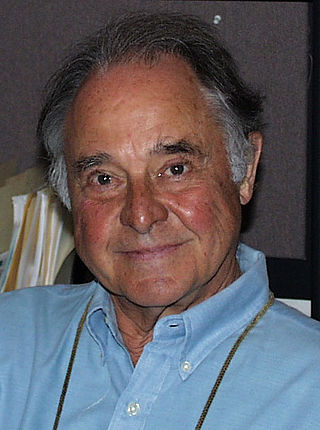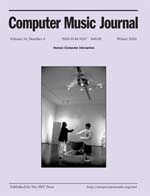Computer music is the application of computing technology in music composition, to help human composers create new music or to have computers independently create music, such as with algorithmic composition programs. It includes the theory and application of new and existing computer software technologies and basic aspects of music, such as sound synthesis, digital signal processing, sound design, sonic diffusion, acoustics, electrical engineering, and psychoacoustics. The field of computer music can trace its roots back to the origins of electronic music, and the first experiments and innovations with electronic instruments at the turn of the 20th century.
Multimedia is a form of communication that uses a combination of different content forms such as writing, audio, images, animations, or video into a single interactive presentation, in contrast to traditional mass media, such as printed material or audio recordings, which features little to no interaction between users. Popular examples of multimedia include video podcasts, audio slideshows and animated videos. Multimedia also contains the principles and application of effective interactive communication such as the building blocks of software, hardware, and other technologies. The five main building blocks of multimedia are text, image, audio, video, and animation.

Warez is a common computing and broader cultural term referring to pirated software that is distributed via the Internet. Warez is used most commonly as a noun, a plural form of ware, and is intended to be pronounced like the word wares. The circumvention of copy protection (cracking) is an essential step in generating warez, and based on this common mechanism, the software-focused definition has been extended to include other copyright-protected materials, including movies and games. The global array of warez groups has been referred to as "The Scene", deriving from its earlier description as "the warez scene". Distribution and trade of copyrighted works without payment of fees or royalties generally violates national and international copyright laws and agreements. The term warez covers supported as well as unsupported (abandonware) items, and legal prohibitions governing creation and distribution of warez cover both profit-driven and "enthusiast" generators and distributors of such items.

"Do it yourself" ("DIY") is the method of building, modifying, or repairing things by oneself without the direct aid of professionals or certified experts. Academic research has described DIY as behaviors where "individuals use raw and semi-raw materials and parts to produce, transform, or reconstruct material possessions, including those drawn from the natural environment ". DIY behavior can be triggered by various motivations previously categorized as marketplace motivations, and identity enhancement.

A record producer is a music recording project's overall supervisor whose responsibilities can involve a range of creative and technical leadership roles. Typically the job involves hands-on oversight of recording sessions: ensuring artists deliver acceptable performances, supervising the technical engineering of the recording, and coordinating the production team and process. The producer's involvement in a musical project can vary in depth and scope. Sometimes in popular genres the producer may create the recording's entire sound and structure. However, in classical music recording, for example, the producer serves as more of a liaison between the conductor and the engineering team. The role is often likened to that of a film director though there are important differences. It is distinct from the role of an executive producer, who is mostly involved in the recording project on an administrative level, and from the audio engineer who operates the recording technology.
A music sequencer is a device or application software that can record, edit, or play back music, by handling note and performance information in several forms, typically CV/Gate, MIDI, or Open Sound Control, and possibly audio and automation data for digital audio workstations (DAWs) and plug-ins.

Live coding, sometimes referred to as on-the-fly programming, just in time programming and conversational programming, makes programming an integral part of the running program.

PLATO, also known as Project Plato and Project PLATO, was the first generalized computer-assisted instruction system. Starting in 1960, it ran on the University of Illinois's ILLIAC I computer. By the late 1970s, it supported several thousand graphics terminals distributed worldwide, running on nearly a dozen different networked mainframe computers. Many modern concepts in multi-user computing were first developed on PLATO, including forums, message boards, online testing, email, chat rooms, picture languages, instant messaging, remote screen sharing, and multiplayer video games.
Acid Pro is a professional digital audio workstation (DAW) software program currently developed by Magix Software. It was originally called Acid pH1 and published by Sonic Foundry, later by Sony Creative Software as Acid Pro, and since spring 2018 by Magix as both Acid Pro and a simplified version, Acid Music Studio. Acid Pro 11 supports 64-bit architectures, and has MIDI, ASIO, VST, VST3, DirectX Audio, and 5.1 surround sound support.

John M. Chowning is an American composer, musician, discoverer, and professor best known for his work at Stanford University, the founding of CCRMA - Center for Computer Research in Music and Acoustics in 1975 and his development of the digital implementation of FM synthesis and the digital sound spatialization while there.
A bibliographic database is a database of bibliographic records. This is an organised online collection of references to published written works like journal and newspaper articles, conference proceedings, reports, government and legal publications, patents and books. In contrast to library catalogue entries, a majority of the records in bibliographic databases describe articles and conference papers rather than complete monographs, and they generally contain very rich subject descriptions in the form of keywords, subject classification terms, or abstracts.

Creative Technology Ltd., or Creative Labs Pte Ltd., is a Singaporean multinational technology company. The principal activities of the company and its subsidiaries consist of the design, manufacture and distribution of digitized sound and video boards, computers and related multimedia and personal digital entertainment products. It also partners with mainboard manufacturers and laptop brands to embed its Sound Blaster technology on their products.

Computational creativity is a multidisciplinary endeavour that is located at the intersection of the fields of artificial intelligence, cognitive psychology, philosophy, and the arts.
File sharing is the practice of distributing or providing access to digital media, such as computer programs, multimedia, documents or electronic books. Common methods of storage, transmission and dispersion include removable media, centralized servers on computer networks, Internet-based hyperlinked documents, and the use of distributed peer-to-peer networking.

An audio engineer helps to produce a recording or a live performance, balancing and adjusting sound sources using equalization, dynamics processing and audio effects, mixing, reproduction, and reinforcement of sound. Audio engineers work on the "technical aspect of recording—the placing of microphones, pre-amp knobs, the setting of levels. The physical recording of any project is done by an engineer... the nuts and bolts."
Artificial intelligence and music (AIM) is a common subject in the International Computer Music Conference, the Computing Society Conference and the International Joint Conference on Artificial Intelligence. The first International Computer Music Conference (ICMC) was held in 1974 at Michigan State University. Current research includes the application of AI in music composition, performance, theory and digital sound processing.

Kendriya Vidyalaya Rourkela is a system of central government schools under the Ministry of Human Resource Development (India). It is in the steel city of Rourkela. The system came into being in 1982 under the name "Central Schools" and has been affiliated with CBSE.
The CAMEO Dictionary of Creative Audio Terms is a dictionary of audio terminology, first published in 1980 by the Massachusetts-based Creative Audio and Music Electronics Organization (CAMEO).

Francis Fan Lee is an inventor, entrepreneur, and professor emeritus of Electrical Engineering and Computer Science at the Massachusetts Institute of Technology (MIT). Lee is the founder of Lexicon (company). He is best known for three inventions: the Digital Cardiac Monitor (1969), the Digital Audio Signal Processor (1971), and the Digital Time Compression System (1972). In 1984, Lexicon won an Emmy Award for Engineering Excellence for the Model 1200 Audio Time Compressor and Expander, widely used in the television industry.
Open source is source code that is made freely available for possible modification and redistribution. Products include permission to use the source code, design documents, or content of the product. The open-source model is a decentralized software development model that encourages open collaboration. A main principle of open-source software development is peer production, with products such as source code, blueprints, and documentation freely available to the public. The open-source movement in software began as a response to the limitations of proprietary code. The model is used for projects such as in open-source appropriate technology, and open-source drug discovery.










